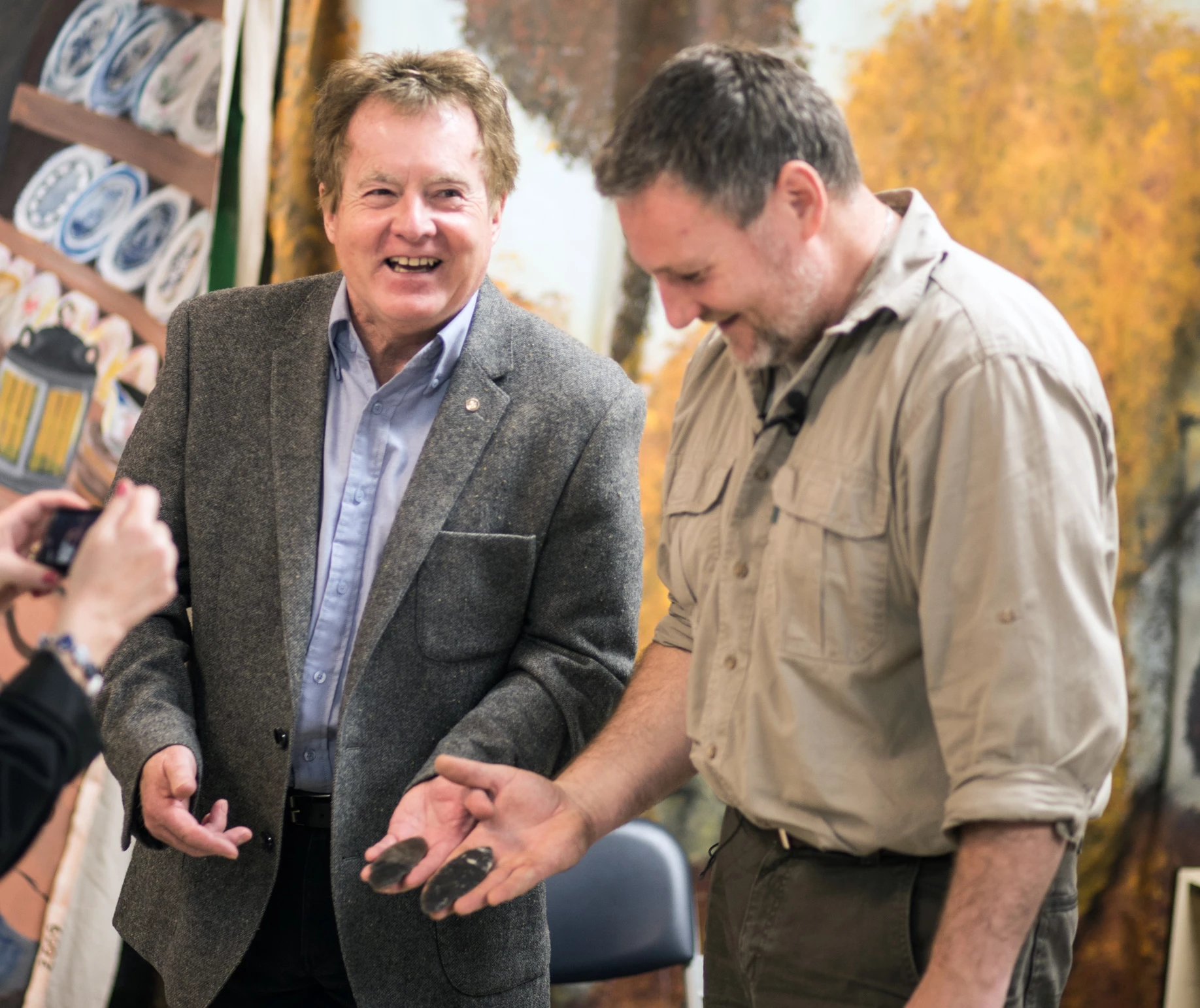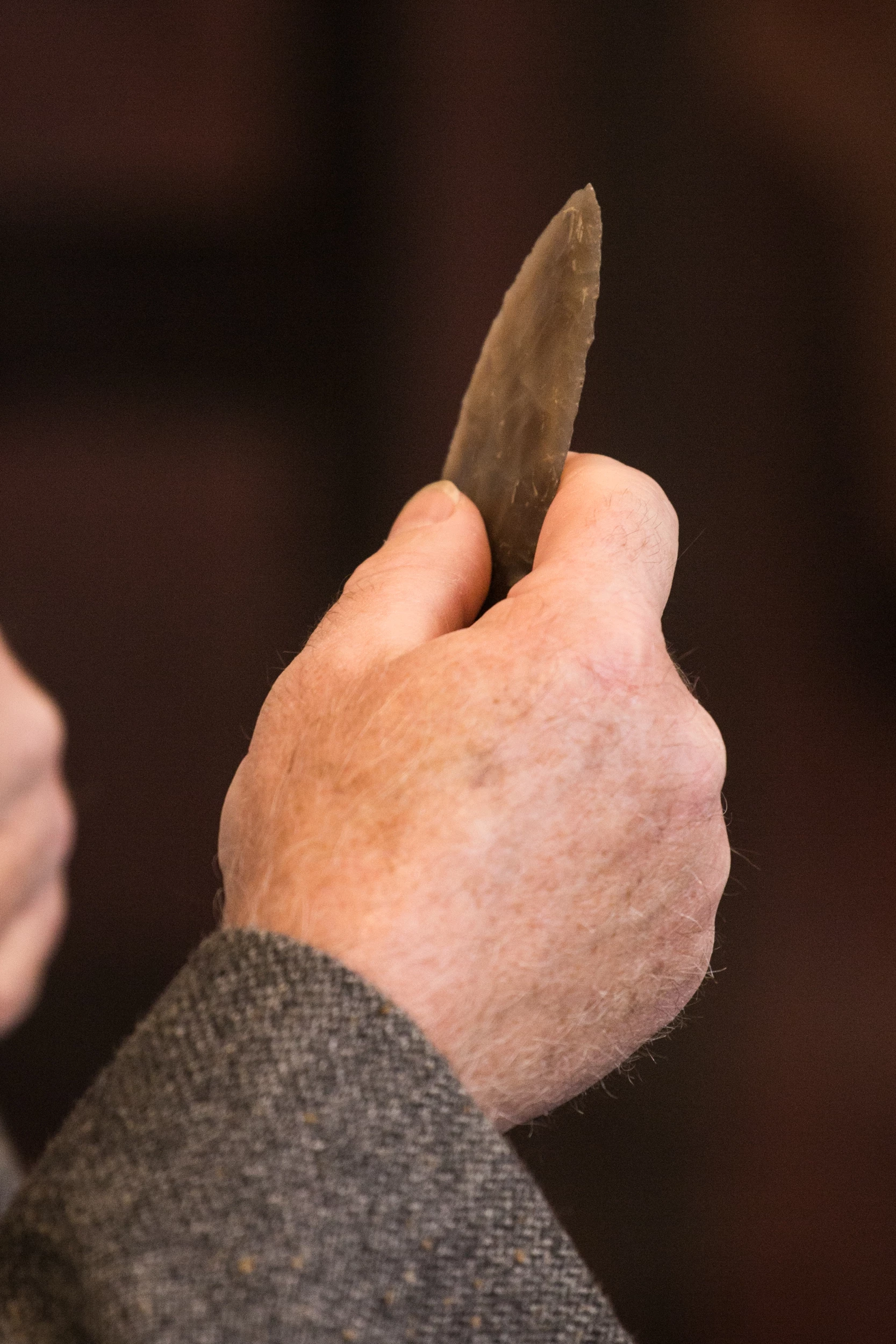The Swansea Bay Dagger
In 1971, Architecture student Paul Tambling was blissfully unaware of perhaps the biggest archaeological discovery that he would ever make in his lifetime and how finding the Swansea Bay dagger (as it is now known) would have an impact on his life.
While walking along Swansea beach Paul and his partner Angela noticed what appeared to be a piece of flint poking out of the sand. What they had discovered purely by chance, was in fact, a ‘4200 year old flint dagger’.
Paul told us: “When I picked up the dagger I was mystified as to how the dagger would have got there in the first place especially as flint does not naturally outcrop anywhere in Wales. Also, the flint was in an immaculate condition and did not appear to have been adversely affected by the action of the sea. I regard it as not only a great work of art but also a very skilled piece of workmanship and I find that it gives me great inspiration when I am designing buildings, where I am also constantly aiming to achieve such a level of craftsmanship”.
Almost 46 years later, and still in possession of the dagger the couple keep the item close to their hearts and believe it to be a unique symbol of their lasting relationship.
Paul said: “During and since my student days the flint has moved with me in an old envelope over six times and there were periods of my life when I actually thought that I had lost it. Nevertheless, since I recently discovered its huge historic importance, the flint in rarely out of my sight”
The flint has now been identified as a ‘Beaker Folk Dagger’ dating from the early Bronze Age, around 2250 to 2000 years BC which makes it around 4200 years old. In its day it carried great symbolic relevance as it would have accompanied high status burials to be with the deceased in the afterlife. There are a small number of other daggers that have been found in Wales but none are of the quality of the Swansea Bay dagger. The greatest number of daggers of this period have been found in South East England.
The Beaker Dagger has its huge archaeological and symbolic value, but what does it mean to Paul and Angela as a family?
“This dagger represents the span of our married life. I found it 3 years before we got married and it’s an object that provides us with a special and lasting reminder of those wonderful weekends spent in Swansea all those years ago and binds us together. It was a magical time which just can’t be repeated.”
Paul and Angela Tambling, who run an architectural consultancy practice based in Brecon, had been unaware of the importance of the dagger but since its archaeological relevance has come to light they are constantly told by experts how lucky they were to find such an important object and in such an un-expected location. “I suppose luck is on my side” said Paul “I was lucky to marry Angela and lucky to find the dagger while with Angela.”
Paul told us that he instinctively knew that it was a marvellous object as soon as he picked it up but couldn’t work out whether it was a dagger or a spear head. Through the years Angela has been continually saying to him. “Why don’t you go and find out?” After much badgering Paul finally decided to visit Brecknock Museum only to find, when he got there, that it was closed for extensive restoration work.
In early 2016 the couple attended a demonstration of flint knapping in Cyfarthfa Museum, Merthyr Tydfil, given by Phil Harding of Time Team. It was here, after speaking with Phil that the true importance of the dagger become apparent and Phil advised that this object of archaeological importance should be recorded and the find reported to Amgueddfa Cymru – National Museum Wales. Soon after, the couple were contacted by, and subsequently met with, Mark Lodwick the Portable Antiquities Scheme Finds Co-ordinator for Wales at Amgueddfa Cymru.
When Mark explained the significance of the dagger Paul said: “The hairs on the back of my neck were standing up when I was told about the layers of significance of the dagger and the fact that I was in the possession of something that somebody has made 4200 years ago”.
Paul continued “I held this object in my hand reflecting on the fact that I had previously treated it with a kind of disrespect since 1971, storing it in an old envelope in the back of a drawer somewhere.”
Since meeting with Phil Harding and Mark Lodwick attention in the dagger has increased dramatically and this has prompted both Paul and Angela to take a greater interest in both archaeology and the Beaker Folk.
Currently there are no plans for a museum to acquire the Swansea Bay dagger as the item belongs to Paul and Angela but they have made every effort, with the help of Mark Lodwick, to make the importance of the dagger known to the public.


Comments - (4)
Thank you very much for contacting us. I understand your disappointment that this artefact isn't in a museum, but it's a highly prized and deeply loved possession of its current owners.
Best wishes,
Marc
Digital Team
Paul, if you cannot see your way to passing it onto the Swansea Museum how about leaving it in your will to the Musuem.